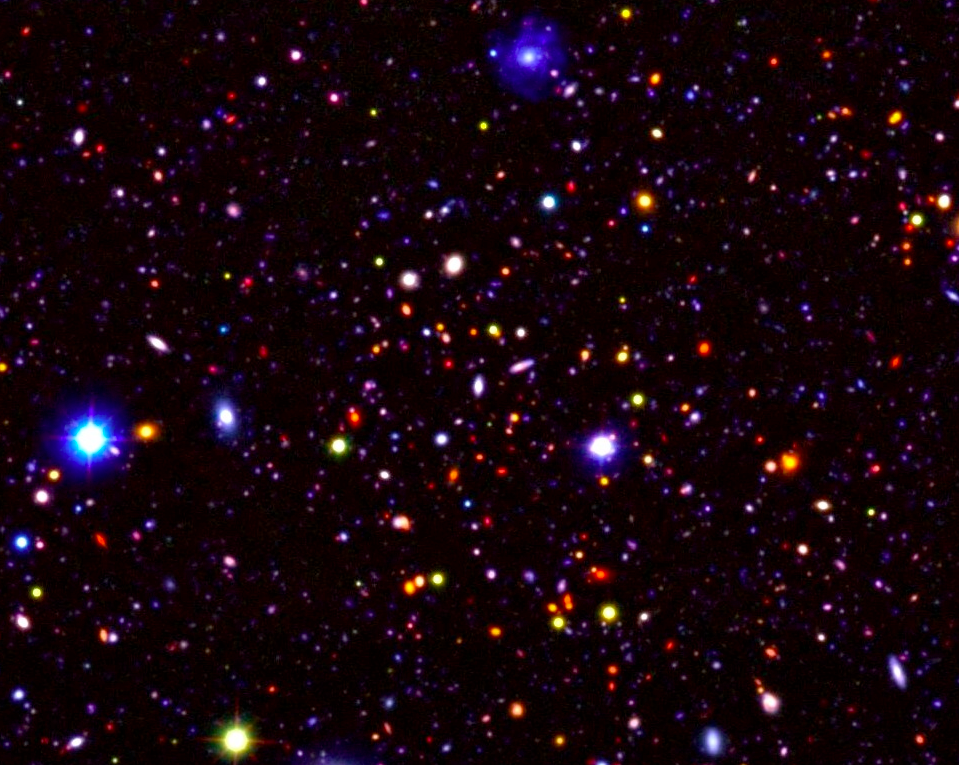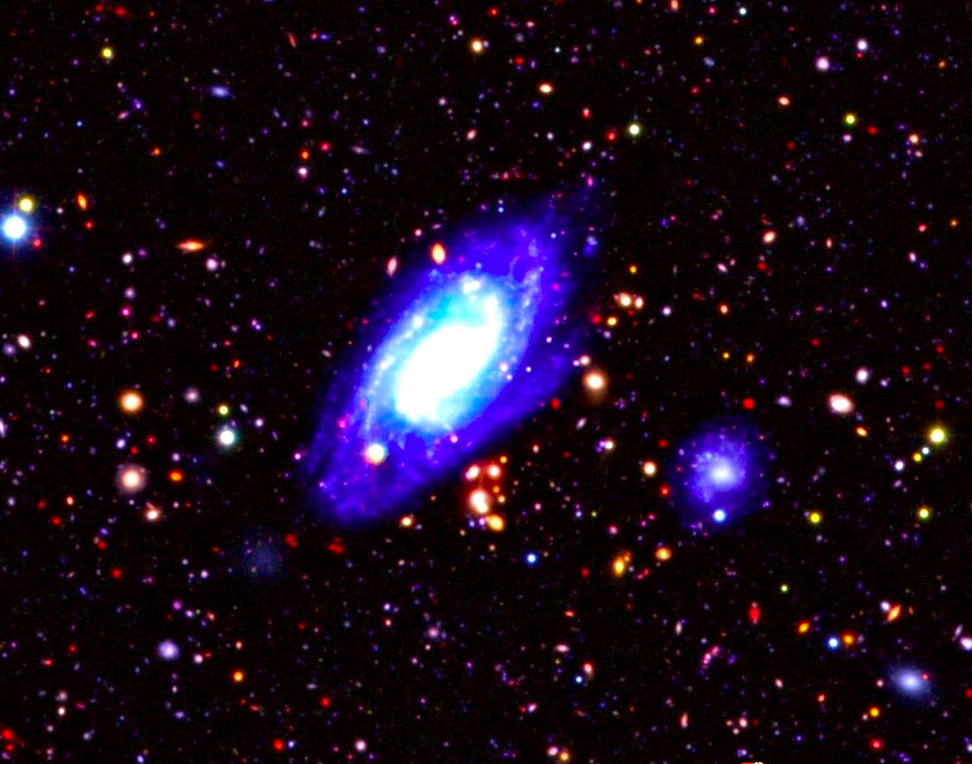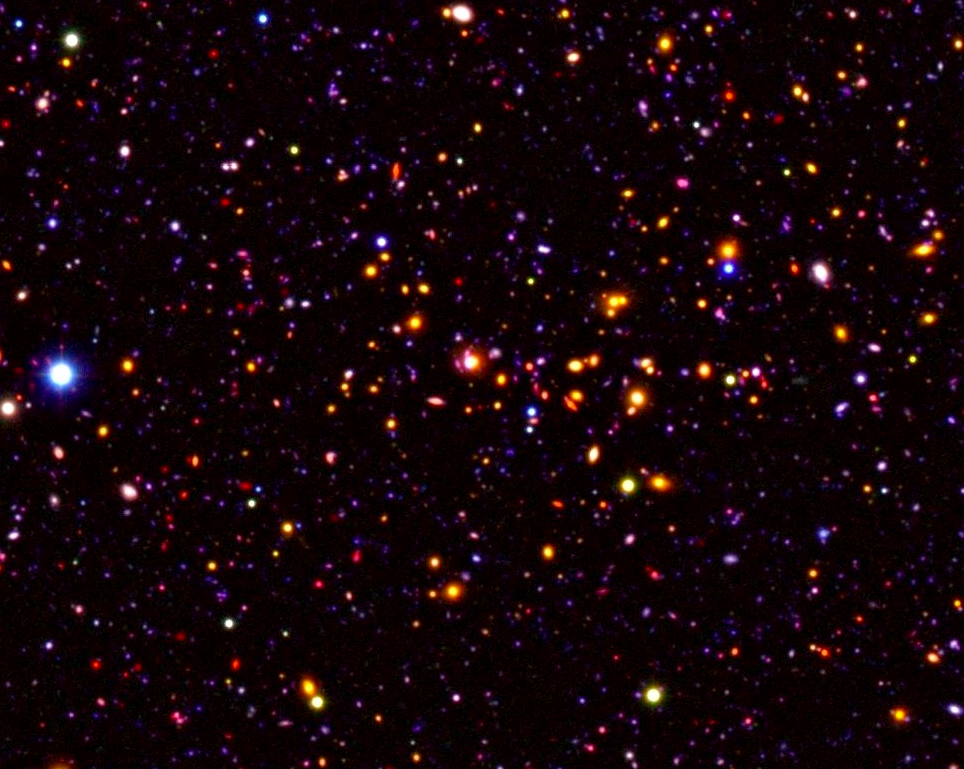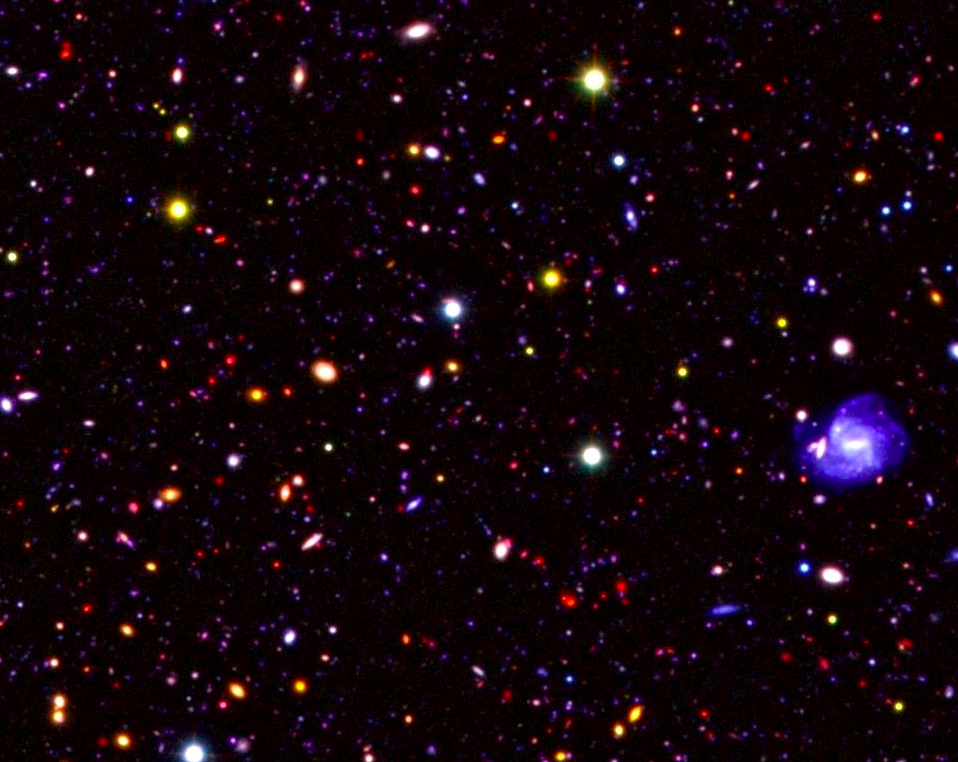Surveying the Distant Universe
The Ultra-Deep Survey (UDS) is a deep infrared survey of the distant Universe. The aim of the project is to observe galaxies in the act of formation, and to understand how they evolve and transform through time. Below you can find more information on this project, aimed at non-specialists.
Looking back in time
When we observe distant objects in astronomy we are also looking back in time, because light travels at a finite speed. When you gaze at stars in the night sky you are typically seeing them as they were hundreds of years ago. Those stars are all within our own galaxy, the Milky Way, but the Milky Way is one of hundreds of billions of other galaxies in our observable Universe. The aim of the UDS is to study galaxies at different stages through cosmic time, looking back billions of years to the very early Universe.
The most distant galaxies are exceptionally faint, so long exposure times on large telescopes are required to detect them. To gain an unbiased view we also need to observe in the near-infrared, as their optical light has shifted to longer wavelengths because of the expansion of the Universe.

The United Kingdom Infrared Telescope (Credit: Paul Hirst)
The Ultra-Deep Survey
The UKIDSS Ultra-Deep Survey (UDS) began in 2005. We used the United Kingdon Infrared Telescope (UKIRT), based at the summit of Mauna Kea in Hawaii, to observe the same small patch of sky night after night, whenever the conditions were optimal. Over a period of 8 years we obtained over 1000 hours of exposure time to produce the deepest infrared image ever taken over such a large area of sky (0.8 sq degrees). This deep image allowed us to see galaxies in their thousands, looking back over 12 billion years to the very early Universe. By drilling through this small patch of sky, so can see galaxies as they were at different slices through cosmic history, which allows us to piece together how they form, evolve, and transform over time to produce the Universe we see around us today.
To date over 130 scientific papers have been published based on the UDS project. Among the many discoveries, we have learned that galaxies change and transform in often surprising and dramatic ways. For example, we have learned that the most massive galaxies often form very quickly in explosive bursts of star formation in the early Universe, but then something catastrophic happens to stop them forming any more stars. This process (known as "quenching") is still poorly understood, and is the topic of active current research. One hypothesis is that the supermassive black holes in the nuclei of these galaxies may be heating or ejecting the gas, so that no more stars can form.
Some of the recent highlights from our research can be found on the "Science" page at the tab above. Below are some example zooms from the UDS images, each corresponding to an area of approximately 4x4 arcmin, representing ~0.5% of the full UDS image. Light from the average galaxy in these images has travelled over 9 billion years to reach our telescopes.




